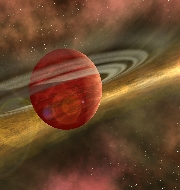K2-229b: Hot, metallic Earth-sized planet discovered
Scientists using Kepler 2 telescope have discovered hot, metallic, Earth-sized planet named K2-229b orbiting dwarf star located 260 million light years away. They had employed Doppler spectroscopy technique also known as ‘wobble method‘ to discover and characterise this faraway planet.
K2-229b
K2-229b planet is almost 20% larger than Earth but has mass which is over two-and-a-half times greater. It is located very close to its host star (0.012 AU, around a hundredth of the distance between Earth and Sun), which itself is medium-sized active K dwarf in Virgo Constellation.
K2-229b orbits its star every fourteen hours. Its day side temperature reaches over 2000 degrees Celsius. Scientists calculated size, position and mass of K2-229b by measuring radial velocity of star and finding out starlight ‘wobbles’ during orbit, due to gravitational tug from planet, which changes depending on planet’s size.
K2-229b has same high density that of Mercury-like planets. It is also innermost planet in system of at least three planets, though all three orbit much closer to their star than Mercury.
Significance
The dense, metallic nature of K2-229b has numerous potential origins. The one hypothesis is that its atmosphere might have been eroded by intense stellar wind and flares, as it is so close to its star. Another possibility is that K2-229b was formed after huge impact between two giant astronomical bodies in space billions of years ago – much like theory that Moon was formed after Earth collided with body size of Mars. K2-229b is similar to Mercury, knowing more about it can potentially give more clues of formation our planets in our own solar system.
Month: Current Affairs - March, 2018


